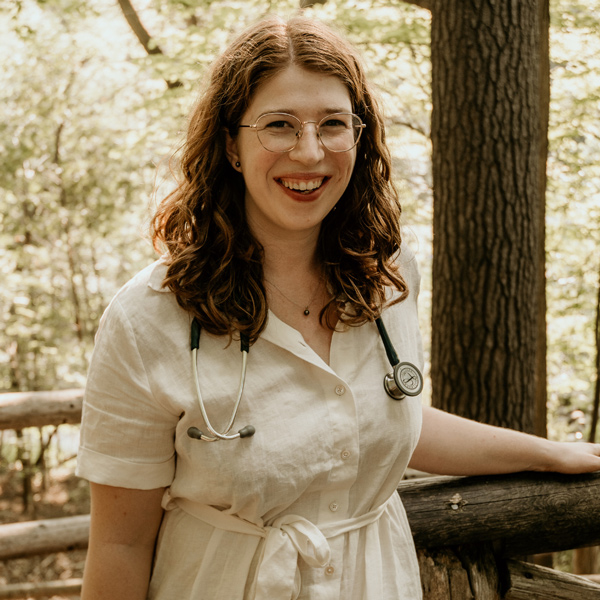Urinary Tract Infections (UTIs) are a common health issue that affects millions of people worldwide,
predominantly women. While most UTIs are infrequent and resolve with antibiotic treatment, some
individuals suffer from recurrent UTIs, which can significantly impact their quality of life. Many
women who experience recurrent UTIs feel frustrated by their reliance on antibiotics and the
disruption that causes to their GI microbiome. Biofilms are an emerging concept that is becoming
more widely acknowledged through research in its connection to recurrent UTIs. There are many
treatments that can support biofilm eradication and enhance the efficacy of antimicrobials in the
prevention and treatment of UTIs.
A Urinary Tract Infection is typically caused by bacteria entering the urethra and traveling up to the
bladder, leading to symptoms like frequent urination, burning sensations, and discomfort. These
infections are usually caused by a group of bacteria known as uropathogens, with Escherichia coli
(E. coli) being the most common culprit. In cases of recurrent UTIs, it is important to confirm the type
of bacteria present with a culture since some bacteria respond poorly to some anti-microbials.
Recurrent UTIs, as the name suggests, occur when an individual experiences multiple UTIs over a
relatively short period, usually two or more infections within a year. This recurrence can be
frustrating and debilitating, leading to increased healthcare costs, side effects from antibiotic
treatment, bladder pain syndrome from scarring to the bladder wall due to chronic infection and fear
and avoidance of sexual intimacy due to its relationship with developing UTIs in susceptible women.
The Role of Biofilms
Biofilms are complex communities of microorganisms, which can include bacteria, fungi, and other
microorganisms, that adhere to surfaces and are encased in a protective matrix of extracellular
polymeric substances (EPS). EPS is a fancy way of describing mucilaginous material that is like a
protective coating for the various micro-organisms in the area. Biofilms can develop when the
bacteria are pushed to protect themselves from anti-biotic treatment.
In the context of UTIs, biofilms form on the inner surfaces of the urinary tract, including the bladder
and urethra. Bacteria within these biofilms exhibit unique characteristics compared to their free-
floating counterparts. These characteristics include increased resistance to antibiotics, heightened
virulence, and the ability to evade the host’s immune response.
The formation of biofilms in the urinary tract contributes to recurrent UTIs in several ways:
- Antibiotic Resistance: Bacteria within biofilms are often more resistant to antibiotics than
planktonic (free-floating) bacteria. This resilience makes it difficult to eliminate the infection
completely. - Incomplete Clearance: Antibiotics may clear the acute infection, but the biofilm’s presence
can allow residual bacteria to remain, causing recurrent infections. - Immune Evasion: The biofilm matrix can act as a barrier, shielding bacteria from the host’s
immune system, making it harder for the body to combat the infection. - Persistence: Biofilms provide a long-term niche for bacteria to colonize, persist, and
potentially trigger new UTIs.
Preventing and Treating Recurrent UTIs
Understanding the role of biofilms in recurrent UTIs opens new avenues for prevention and
treatment. Here are some strategies to discuss with your Naturopathic Doctor:
- Antimicrobial Choice: When recurrent UTIs are suspected to involve biofilms, physicians may
consider using antibiotics with enhanced biofilm penetration properties. If you are working
with a Naturopathic Doctor, choosing the right herbal anti-microbials based on the strain of
bacteria in volved can make all of the difference. - Anti-adhesion support: Some studies suggest that cranberry products such as PACs and D-
mannose may help prevent biofilm formation in the urinary tract by preventing bacteria from
sticking to the walls of the bladder and urethra, reducing the risk of recurrent UTIs. Talk to
your ND for dosage and treatment recommendations. - Probiotics: Probiotics, especially those containing beneficial bacteria like Lactobacillus, may
help maintain a healthy urinary microbiome and potentially prevent biofilm formation. - Biofilm-Disrupting Agents: Researchers are exploring biofilm-disrupting agents and
strategies, such as bacteriophages, enzymes, and specific chemicals, to target and disrupt
biofilms. There are several safe, natural supplements that can be combined with anti-
microbial treatment or used on their own to get rid of biofilms that have already developed. - Personal Hygiene: Maintaining good hygiene, proper wiping techniques, and staying
hydrated are essential steps to minimize the risk of recurrent UTIs.
Recurrent UTIs can be both frustrating and debilitating for those who experience them.
Understanding the role of biofilms in these infections is a critical step in improving prevention and
treatment strategies. While the connection between biofilms and recurrent UTIs is still an active area
of research, these findings offer hope for more effective management of this common condition and
the potential for a better quality of life for those affected. If you experience recurrent UTIs, it is best to
work with a naturopathic doctor who understands the effects of biofilms on the immune system so
that you can not only resolve your frequent infections, but also improve your overall health, energy,
and immune system regulation.

